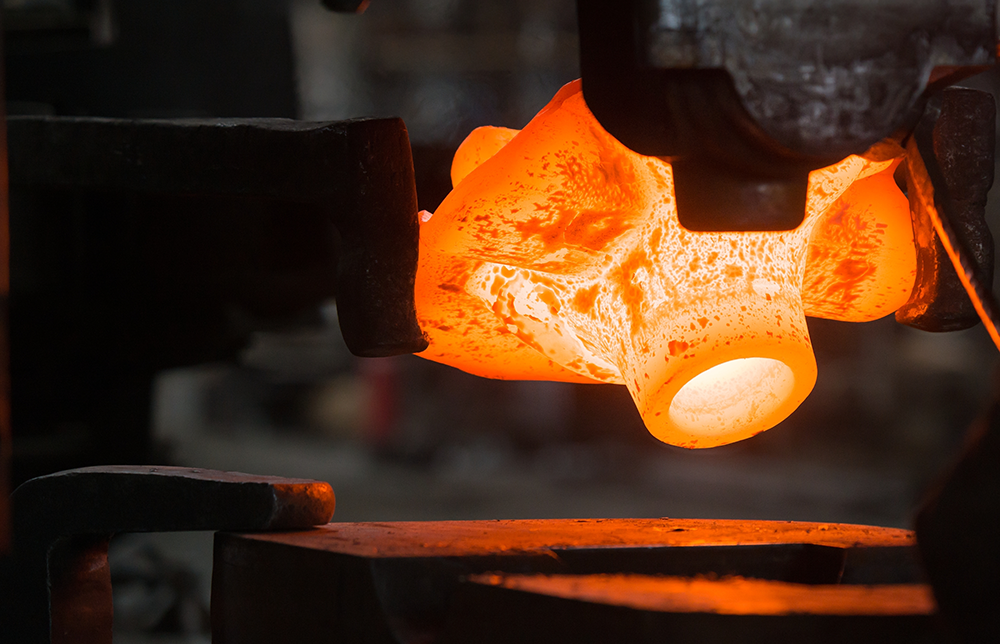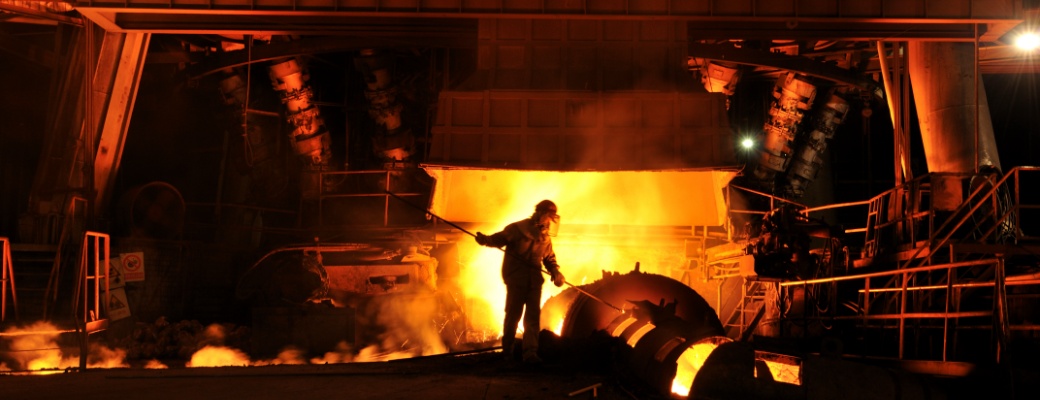In industries where performance and reliability cannot be compromised—such as transportation, oil & gas, and construction & mining—the materials and processes behind your components make all the difference.
Engineers and R&D teams are tasked with designing solutions that can endure heavy loads, extreme environments, and continuous operation. Yet too often, premature part failures stemming from hidden weaknesses in castings result in costly downtime, safety risks, and frustrated end users.
This is where forging proves its worth. At Canton Drop Forge, we’ve built more than a century of expertise around one central idea: forged components provide unmatched strength, reliability, and performance when compared to castings. Let’s explore why.

The Fundamentals: Casting vs. Forging
Casting is a process where molten metal is poured into a mold and allowed to solidify into the desired shape. While this technique has applications for complex shapes and high-volume production, it comes with inherent drawbacks:
- Porosity and Shrinkage Defects – As molten metal cools, tiny air pockets and voids can form inside the casting, creating weak points that are often invisible until failure occurs.
- Non-Uniform Grain Structure – Because the metal solidifies randomly, the internal grain structure lacks orientation and consistency. This leads to reduced strength and poor fatigue resistance.
- Brittleness Under Stress – Castings are more likely to fracture under heavy loads or impacts due to these internal flaws.
Forging, on the other hand, involves shaping solid metal through controlled compressive force. Instead of melting, the metal is heated and pressed into its final form. This difference in process delivers significant advantages:
- Aligned Grain Flow – Forging reshapes the grain structure of the metal so that it follows the geometry of the part. This alignment provides exceptional toughness and fatigue resistance.
- Improved Integrity – The high pressure used in forging closes up internal voids, eliminates porosity, and ensures superior density.
- Consistency and Precision – Forgings deliver uniform mechanical properties throughout the part, which engineers can trust for long-term performance.

Why Forgings Excel in Heavy-Duty Applications
When components are expected to perform under punishing conditions—whether in a drilling rig, a turbine, or heavy transportation equipment—the difference between casting and forging becomes clear.
- Strength Under Pressure – Forged parts consistently outperform castings in tensile strength, yield strength, and impact resistance. For components like crankshafts, gears, or flanges, this added durability can mean the difference between smooth operation and catastrophic failure.
- Reliability in Harsh Environments – Oilfield equipment faces corrosive environments and cyclic stress; construction and mining equipment demand rugged durability under relentless loads and abrasive conditions; transportation components must withstand constant vibration and impact. In every case, forgings retain their integrity while castings are prone to cracking, chipping, or premature wear.
- Fatigue Resistance – Engineers know that fatigue failures often occur far below the rated strength of a material. Because forgings have aligned grain flow and fewer internal defects, they resist fatigue cracking far better than castings.
Debunking The “Casting Vs. Forging” Myth
One of the most persistent misconceptions in procurement is that castings are the more economical choice. At first glance, the per-unit price of a casting may look attractive compared to a forged part. But when the full lifecycle is considered, that savings quickly disappears.
- Higher Replacement Frequency – Cast components wear out faster, meaning more frequent replacements and more labor required to install them.
- Unexpected Downtime – When a casting fails without warning, production stops. A cracked valve body or broken gear can lead to delays, lost revenue, and frustrated customers.
- Maintenance and Inspection Costs – Castings require frequent inspection to catch hidden flaws like porosity or shrinkage cracks. These extra steps add hidden costs over the life of the part.
- Reputational Risk – A single failure in a critical component can compromise customer trust and tarnish a brand’s reputation.
Forgings eliminate these risks by delivering superior strength, reliability, and consistency. While a forged part may cost slightly more upfront, it pays dividends in performance and longevity. Over the life of equipment, forgings reduce maintenance, minimize downtime, and prevent unplanned failures. This measurable ROI makes forgings the smarter investment for both engineers and procurement teams.
Canton Drop Forge: Forged for Performance
At Canton Drop Forge, we have been helping engineers, purchasing teams, and R&D leaders solve critical challenges since 1903. Over more than a century, we’ve developed a reputation for combining deep technical expertise with a commitment to performance, reliability, and value.
One of our key strengths lies in our ability to deliver true engineer-to-order solutions. Every application has its own unique demands, and our team works closely with customers to design and produce forgings that meet those specifications exactly. Whether the need is for components that can withstand extreme pressures, corrosive environments, or repetitive fatigue, our process ensures that the final product is tailored to perform.
Material knowledge is another cornerstone of our success. We work with a wide range of materials and alloys, carefully selected to optimize strength, toughness, and long-term performance. That expertise allows us to recommend the right material for the right job, eliminating guesswork and giving engineers the confidence that their components will hold up under even the most challenging conditions.
Most importantly, Canton Drop Forge delivers long-term value. Forgings that last longer and perform better ultimately reduce lifecycle costs, minimize downtime, and improve profitability for our customers. When the stakes are high, uncertainty isn’t an option—and that’s why some of the world’s most demanding industries trust Canton Drop Forge to keep their businesses moving forward.
The Bottom Line
Forgings aren’t just stronger—they’re smarter. They solve the persistent problems of premature part failure, downtime, and hidden defects that plague castings. While the upfront cost may be slightly higher, the lifecycle savings, safety, and performance gains make forging the clear winner.
Explore our forging capabilities to see how we can strengthen your next project.
